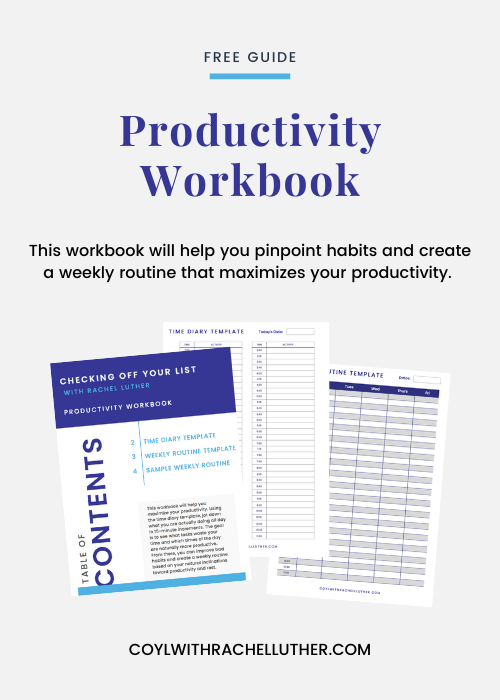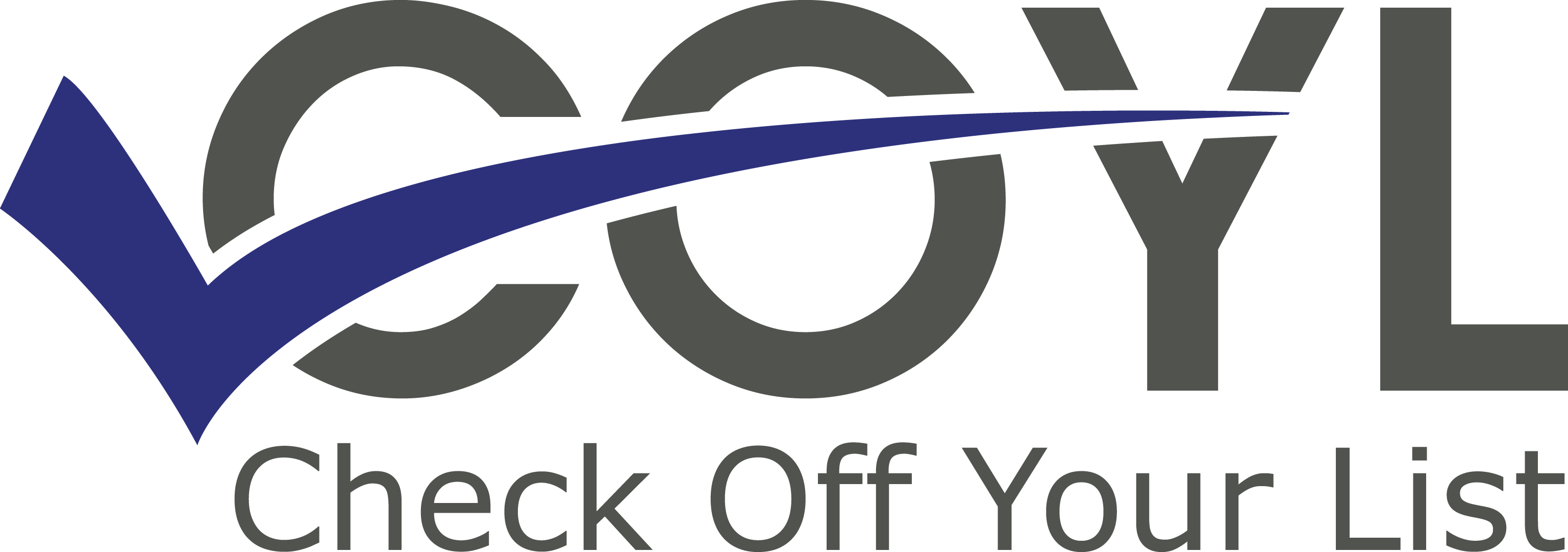
You might remember a time people browsed bookstores when they wanted to read and learn about other people, real and imagined, and their ideas. These places still exist, though most people choose to get their books and information on their phone, computer or tablet.
Back in the day, if you went to the self-help section in one of these bookstores you’d mainly find two kinds of books. The first one is motivational, and while that’s not really what I’m here for, I can’t help it if you’re finding some kind of motivation in your life from your business improving as a result of outsourcing.
The other kind of self-help book—we’ll call it productivity—is much more my aim today. It’s something I’ve hinted at in previous episodes, yet you still might be asking why I’m such an authority on productivity. The truth is, I’m not, any more than any of those self help authors are—sorry Dale Carnegie—for the simple fact that there is no degree being offered at any institution I’m aware of. Does that mean I can’t offer some sage wisdom on the topic? Of course not. All I can do is share what I’ve learned from my experiences. Right, Dale?
Implementing what I’ve learned from my infatuation with productivity has helped me accomplish most of my goals up to this moment - even if they took longer than I anticipated – and they can help you too. I have a realistic plan for how I’m going to set about accomplishing my future goals with specifics steps for today, next week, and even a few years from now. What I’d like to do today, is simply share some techniques that improve my productivity on a day-to-day basis as I work toward my goals.
So get ready to run a mental marathon. If the previous episodes were concise and focused sprints, today is going to be an overload of information—and to be honest, a bit more meandering (but in a good way)—as I work through some of the strategies I use to make the most of my day.
You have to know your audience, and I figure I have two different kinds of listeners, though I’m guessing there is some overlap: You might be here because you want to improve your productivity. If so, this episode is certainly for you, and I’m glad you’re here. The second type of listener is interested in outsourcing, and whether you’re here because you like what I’ve had to say so far, or if this is your first time checking in, I’m glad you’re here too.
Whether you’re the type that just wants more productivity or you’re interested in outsourcing, or if you want it all, ideally you have a good grasp of your to do list; You know what you want to outsource, and you’ve hopefully taken some first steps to get tasks off your to do list, or at least started to plan when you will take those first steps. If not, don’t pause now, but take a minute to listen to episodes 4) When and How to Hire a Virtual Assistant and 5) How to Find What You’re Good at And Do It. They’ll get you started on that journey and even give you a head start as you navigate the world of outsourcing.
So getting back to productivity: There are few things that get me to nerd out as much as tips on productivity—honestly, this is one of the episodes I’ve been looking forward to most. I devour any self help book on organizing, efficiency, and productivity, and I’m always looking for good recommendations, so I want to know... Do you have a favorite? If so, send a DM on Instagram at @rachelluther or Facebook at Checking Off Your List with Rachel Luther. I’d love to hear your favorite resources on this topic.
There are some proven tactics on improving efficiency, and I say proven because I’ve proven they work for me, so now I’m going to tell you about them. Personal experience is a wonderful teacher, and I would probably have to wash my mouth out with soap if I uttered that cliché. You know, the one about learning from others, etc. etc. etc., but they’re clichés because they’re true, which is why you’re going to learn from my slight addiction to productivity.
We’re going to cover time diaries, sticking to a routine, prioritizing a to do list, freeing up your mental space and rest, as well as the benefits of technology and automation. So grab a pen and paper, then put on your mental running shoes, and I’ll dive right in.
Time Diary
We’ll start with time diaries, task logs, or time blocking - whatever you want to call it. This exercise of writing down what I do throughout the day (not what I think I did) set the foundation for my productivity, simply because it forced me to be mindful of how I spend every minute of my day. Don’t worry, it’s not something you have to do all the time, but devoting time to maintaining a time diary will help you get on the path toward productivity.
Zig Ziglar said, “Lack of direction, not lack of time, is the problem. We all have 24 hour days.” Thanks for the insight, Zig, because I never knew how much a lack of direction affected my day to day. I’m a motivated person. I’m working on something constantly … so I thought.
My first business coach, Deb Aungst, recommended I track my time in small increments to get a real picture of my day. I printed out a sheet that had 15 minute time slots between 6 am and midnight. As I went through my day, I wrote down exactly what I was doing for each 15 minute time slot. While it sounds tedious (and it was), it was enlightening. Why? It turns out that when it comes to our own productivity we are pretty terrible trackers of time.
An American Time Use Survey by the Bureau of Labor Statistics found in a time-diary study that people claiming to work 60 to 69 hours per week clocked an average of 52.6 hours, while those who believed they worked 70 to 80-hours or greater worked a total of 58.8 hours.
Hmmm... maybe this explains why I, someone who isn't a great test taker, had to study nonstop for final exams in college. Or did it just feel that way? This doesn’t mean I or other busy people are lying about how much we work; rather, a time diary study shows how easy it is to overlook the wasted time in our day.
Even though I thought I was busy all day long (and I was busy!), there were productive times and unproductive times. By keeping a time diary, my eyes were opened to how much time I actually spent browsing social media or reading Reddit articles when I thought I was doing something productive. I realized how quickly 15 minutes flies by, and I learned the significant amount of time I was spending on various things when I had assumed it was mere minutes.
After two long weeks of tracking my time, I was able to curb some unproductive habits. Knowing you have a problem is half the battle, Right? For me, I wasted a lot of time viewing the latest fashion on Pinterest, and Zillow was a downright problem as I browsed houses we never intended to buy. I pinpointed the activities that weren’t serving me and my goals how I wanted. Now, I could guard against giving into those impulses (like clicking that next thing on my phone) and choose a more productive task.
I tracked my time for two weeks, because it not only showed trends in my habits but shed light on my inclinations throughout the day. I realized I’m more productive in the morning, because I like to work hard then play rather than bounce back and forth with frequent breaks. As a result, I coordinate my day to optimize my productive times and allow myself a break during my unproductive times.
My entire day still revolves around what I learned through this process—that's how integral it was and continues to be to my productivity. I schedule appointments, work on school with my children, and devote time to planning this podcast all based on when it best fits within my inclinations. This allows me to work when I’m at my best because I’m working according to my natural rhythms, and it’s because I took the time to learn what works best for me and when throughout my day.
Keeping a time diary is a bit tedious, but as you get into a routine your road to productivity will become more organic. To help you glean valuable details from a time diary, then create a routine that works for you, I created a time diary template and time block schedule so you can easily determine your inclinations and set a schedule accordingly. I even included a copy of my routine for your inspiration. You can download all of this in an easy to use packet by clicking the link in the episode notes, or by visiting COYLwithrachelluther.com.
Sticking to a Routine
Now that you have devoted some time and energy, ok … a lot of time and energy, to evaluating your habits and pinpointing your productive times in a day, it’s important to set and stick to a routine. A lot of time can be wasted figuring out what to do next. To avoid the mental strain of deciding the next move multiple times throughout the day, I created a routine based on the knowledge I gained through time blocking my days.
Every person’s routine will be different, because you should customize it to your needs. My day goes much better when I stick to the routine I came up with from my time diary. Why set yourself up to fight your inclinations all day long, when you can set yourself up for success by catering to them?
However you arrange your day, here are four tried and true methods to ensure you are efficient with setting your routine.
- Start your day focusing on your to do list. This will prevent you from being derailed by other things throughout the day.
- Stop putting out fires all day: Plan a specific time of day to respond to the needs of others, but only after prioritizing your goals. Someone else's emergency doesn’t always mean you have an emergency.
- Schedule similar tasks together. It takes time to change gears, so your brain requires less transition time when you stick to similar tasks before moving on rather than randomly jumping around your to do list.
- Before leaving your office or shutting your laptop at the end of the day, update your to do list with new or outstanding tasks and projects. You’re already in work mode, so make that list rather than waste mental energy “remembering” that thing in your off time or having to groggily figure out where to start as you chug coffee the next morning.
Hopefully, I showed if you’ve gotten in the habit of a routine, a to do list can be the natural product of sticking to that routine and ending your workday with a to do list.
Prioritizing a To Do List
The best part of the to do list for me is the satisfaction of feeling like you accomplish something. Success can be a long road, and there is nothing like the gratification of checking something off my to do list. I love it so much I essentially created a company around that concept. Taking pen to paper to check something off my to do list fuels me to move through the rest of my day. Now you might not relate to this feeling, and that’s ok. You can still benefit from customizing a to do list that works for you.
Have you ever had a few minutes between tasks, maybe you finish an appointment early, and you don’t know exactly what to do so you scroll Instagram until the next thing on your calendar rolls around? As you found when you were time blocking, this time adds up. A to do list that is organized to fit your needs will help you optimize those few minutes. And I promise you, taking advantage of those few minutes here and there can significantly increase your productivity.
There are several ways to structure a to do list, but the primary goal is to keep track of outstanding tasks so you don’t forget them and to prioritize those tasks to help you focus on what is most important to you and your business.
Remember how I love self help books? Well, The 7 Habits of Highly Effective People by Stephen Covey popularized The Eisenhower Matrix, which revolutionized my to do list. I don’t replicate the Eisenhower Matrix exactly. If you have further interest in the Eisenhower Matrix you can google it; I also discuss in more detail how I use it in Episode 5) How to Find What You’re Good at And Do It.
Returning to outsourcing, the tasks on your to do list are what need your input or unique skills as the owner, and these are where you want to focus your time when you’re working. Some are more important or time sensitive than others. Remember, I have a routine for my day, which allocates time to address the various areas of my life, whether that is home schooling, Check Off Your List, or acting. While this helps me find time for all my areas of passion, prioritizing my to do list eliminates the mental energy consumed by juggling each of these things and remembering the outstanding tasks for all of them.
Without a well-organized to do list, I feel the pressure that comes with feeling the need to address all the things in all the areas of my life, and honestly, feeling this pressure usually results in very little productivity. Do you know that feeling, the paralysis of having so many things to do that you can’t figure out how to start any of them? Yeah. Me too, which is why to do lists have become such an essential part of my life.
Because I have time set aside to focus on each of my various passions, when it’s time to sit down at my desk for Check Off Your List, having my “Only Me” list-- for all the areas of my life--permits me to mentally focus on Check Off Your List and focus on the other things at other times. I don’t have to remember anything, because it’s already written down and time’s set aside to accomplish it. My mental energy is solely focused on Check Off Your List.
To really optimize my time, I like to prioritize my to do list so I’m starting with the urgent tasks first. I find additional stress when there is a due date looming over my head. If something is urgent, I like to knock it out first thing, so it is at the top of my list. I don’t have to budget my time to ensure I address that before it’s time to move onto home schooling or rehearsal or time with Colin. Tackling the things that must be done allows me to move onto the important things without the stress of a time crunch.
Moving onto the important things guarantees that I focus on what provides the most impact in my business. I get the most bang for my buck, so to speak. I’m mentally free of other tasks and deadlines, so I’m able to problem solve and bring creativity to the important areas of my business. Then, I copy, paste, repeat with other areas of my life.
When it’s time to switch gears, - because let’s be honest, we all have a lot going on in a single day. That’s probably part of why you’re listening to this podcast! - I can pick up my prioritized to do list for the next thing to dive right in with minimal transition. Prioritizing my list before I sit down means I’m productive from minute one...as long as I have my coffee next to me.
Now, be sure, there are always interruptions. It might sound like my day is very routine and I can isolate myself to tackle a responsibility with no interruptions, but that is far from the truth. I have 4 children nearby most of my day, so there are multiple distractions—some welcome, others not so much-- at any given moment. Full disclosure: I would give up after many of those disruptions, I’m sure you know how frustrating they can be, but my to do list helps me jump right back without missing a beat.
Sometimes, the interruptions can be from myself, but my to do list gives me a place to write things as my thoughts distract me from what I’m doing. Have you ever been in the middle of something, and you remember something else you intended to do or realize something you want to accomplish, but you forget what it was by the time your done with what you’re doing? I quickly jot these things on my to do list to get the mental interruption off my mind and keep my focus on the task at hand.
As I wrap up each area of my life in a day, I have time set aside to evaluate and prioritize my to do list to ensure I am ready to start in the right place tomorrow. I’m in the mental space to know what comes next, so I take a few minutes to make sure the to do list reflects what I’ve checked off my list (remember: my favorite part!) and outlines what is most urgent and most important for the next day.
Part of this time is wrapping up anything short on my to do list. Is there an e-mail that needs sending? A phone call or text that needs returned? If I can do it in about two minutes, I’ve learned that it’ll take more time for me to circle back to it later. I like to leave 20ish minutes for evaluating my to do list and wrapping up any brief tasks, but you’ll find the right amount of time you need. It’s worth it to set aside enough time today to set yourself up for success tomorrow, and tomorrow you will thank you.
There are a few other strategies I’ve tried in the past, so I think I’m going to do a podcast solely devoted to tackling to do lists in the future, so let me know on social media if you’d like to hear more about the various strategies I've tried for using to do lists.
Free Up Mental Space and Rest
So far we’ve discussed to-do lists as essential for freeing up your time and allowing you to use it more efficiently and proficiently. I also mentioned mental space, an invaluable and I think immeasurable resource that doesn’t really get the same kind of press—I’d venture to guess there aren’t a lot of books on the shelves dedicated to the subject. Yes, lots of people preach the benefits of Yoga for clearing the mind, but I’m focusing on the external factors that we think we can’t control but in reality we do.
What I mean is there are innumerable benefits that come with removing stress by minimizing unnecessary mental work. You’re listening to a podcast about outsourcing, so we’re theoretically on the same page there. I would be remiss if I didn’t remind you about the mental freedom that comes through outsourcing. - even in the little things. I’ve mentioned in previous episodes that I have a cleaning lady every other week; something I’ve never mentioned is that I have someone manage my mail; they throw out the junk and I only have to deal with the important stuff. I homeschool, but I hire a tutor to carry the mental load of lesson plans. I’m a better mom and a better business owner as a result of removing things from my mental to do list.
My body needs a break as much as my mind, so it’s important to schedule breaks into your day. Your brain and body need to rest and reset in order to perform at top capacity. I’m learning and growing in this area, because it is difficult for me. Research at Florida State University has shown that our top productivity is achieved when we work for 90 minutes then take a break. The break can be to refill your coffee or grab some lunch, but I’m trying to take a walk or move in some way. Even just 10 minutes can reset your brain and energize you as you jump to the next step.
The Pomodoro Method even uses a timer to ensure you take a break every 25 minutes – what Francesco Cirillo deemed long enough to be productive but not too long to mentally exhaust yourself. Such frequent breaks don’t work for my life. I’m all about catering things to what work for me! Part of my routine is to optimize the natural transitions between various aspects of my life – the different passions where I want to focus my time – by playing a game with my kids, taking a walk, or making a latte to help me power through the rest of the day.
Update Technology and Automation
Another thing I do to help my mind and body to stay sharp and fresh is to take technology breaks. Because of technology’s importance, many of my priorities require staring at a screen, so a healthy break could just be a temporary respite from technology. The truth we’re all aware of is that technology is unavoidable, but that doesn’t mean we have to let it dominate our lives, and one of the easiest ways to improve your productivity is to update your technology and find ways to automate things that waste your time.
This can be as simple as using a customer relationship management system to keep all the information about your customers in one easy to reference place. Remember how we talked about freeing up mental space and energy? A quick reference about your customers and potential customers can help you customize their experience for next level customer service without having to expend the brainpower to keep it all straight in your head.
Through the wonders of technology, you can also automate a lot of things. My husband, Colin, is a tech guru, so he helps me with a lot of these things. There are industry specific things that might help you, but I’m not going to speak to that today.
I can tell you there are automation options that cross all industries and automate tasks like invoicing and reminders about amounts due, mass communication with your leads and customers, your social media campaigns, and your calendar -all through a variety aps and websites. Thank you, technology! There are even simple things like auto population features on web browsers that can save you time with online tasks by remembering the basic information you find yourself inputting on a regular basis. While it takes time up front to set automation in place, I always recommend slowing down to speed up. Take the time to put in place things that will save you time on a consistent basis.
Ideally, you’ve gleaned some helpful tips today. No matter which things from today’s podcast you decide to implement today or down the road, I’d love to hear what works and doesn’t work for you. And even if you have strategies, I haven’t mentioned that are helping you advance on your journey to increased productivity, I want to hear about it. Also, don’t forget about those book recommendationson social media! And you can send me a DM about your productivity on Instagram at RachelLuther or Facebook at Checking off Your List with Rachel Luther.
And I’ll finish with this: I love how Laura Earnest from Whole Life Productivity differentiates efficiency and effectiveness when it comes to productive people. Laura said, “Efficient is doing things right and effective is doing the right things.” Productive people focus on doing effective things - the tasks where they make the most impact, a greater impact than anyone else can, and they ensure they complete those things as efficiently as possible. Productive people don’t rush to get everything done. They realize there is enough time to accomplish what they need when they prioritize where to focus and outsource the rest.
In the next episode of Checking Off Your List Rachel Luther, we will explore the 80/20 rule of outsourcing. As you remove various tasks from your to do list, you can focus on the 20% of your day that gets you 80% of the results in your business. Other people are more qualified and better equipped to check certain things off your list, so you need to relinquish control of those tasks to let them do their job to the best of their abilities and give you the mental capacity to focus on the 20% to the best of your abilities. For more on the 80/20 rule of outsourcing and other strategies to incorporate as you outsource, subscribe so you can follow along with my journey on Checking Off Your List with me, Rachel Luther.





